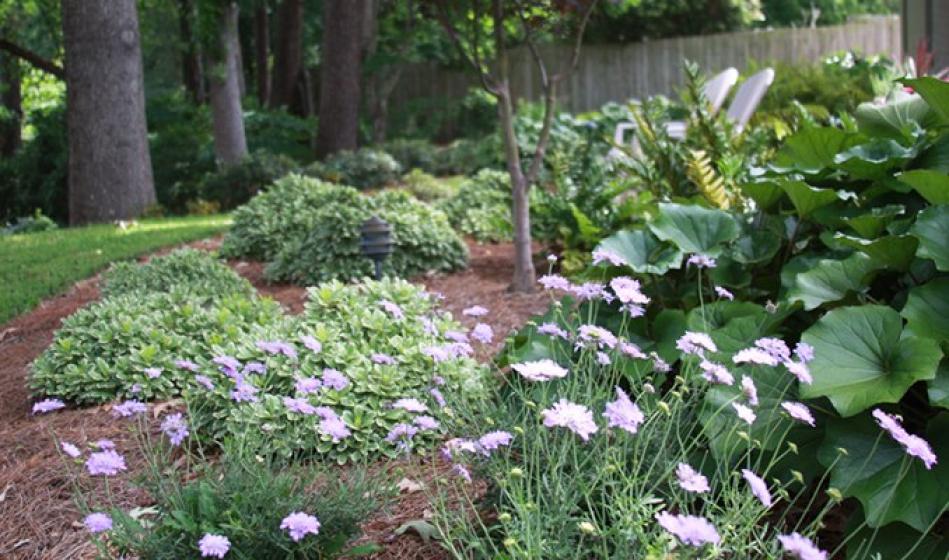by Diane Smith, McDonald Garden Center Landscape Designer
With warmer weather and longer days finally upon us, many of us are thinking of ways to get our yards in tip-top shape. While it may seem overwhelming at times, don't worry. We're here to help! Here's a few simple tips from one of our Landcape Designers to help you get your yard in full spring.
Select the right plants for the right place. Choosing the right landscape planting is much like choosing a piece of art work. It is a reflection of your personality, so it’s important to be happy with the end result. In addition to matching your taste, the plants must fit the space (at maturity), compliment your homes architecture and thrive in the particular exposure and soil conditions. Due to all the site factors, plant selection can be a compromise, but with a little understanding and patience, you will have a rewarding landscape. Don't know what to plant? Stop by and see any of our horticultural experts and we'll work together to decide what is best for your yard.
Select a few specimen plants. These are unique plants that give you that 'wow' and act as a focal point in your landscape. You should love the plant you choose. Be selective with your specimen plants, less is more. Too many specimen plants will no longer make them the focal point. Each will no longer stand out and make your landscape seem to jump around and appear cluttered. The goal is to draw one's eye in and allow it to follow the flow around the garden.
Keep it tidy. You don’t need an award-winning garden for your landscaping to look nice. Simply keeping it tidy will go a long way. If necessary, shape an unruly shrub, invest in a nice hose caddy, and put garden tools away after use. Also dispose of empty nursery containers, damaged pots or garden art, and find a secret place to stash leftover bags of mulch or soils. Periodically check for weeds and pull as needed before they go to seed or spread by roots.
Now is the time for some basic housekeeping. Remove the last of the fallen leaves and other plant debris. When possible, clean out the insides and atop the root crowns of shrubs and perennials. Excessive leaf debris harbors disease and insects and can also prevent good water saturation to the root zone. Deep accumulation of mulch, particularly at the base of trees, is often a problem; to ensure the health of your gardens biggest investment, remove excess mulch to expose the trees root flare. Now is a good time to cut back your grasses, liriope and roses if you did not do so in the fall. This is also a good time to remove any dead, damaged or crossing branches from various trees and shrubs and deadhead your perennials. Once you have a clean canvas, think about any landscape improvements and plan for new plantings. Remove any winter weeds and apply an inch of mulch to established beds, before the spring weeds begin to sprout.
Photos from Diane Smith's own garden.
Learn more about how our landscape team can help you. learn more >>

